Reading Time: 7 minutes
In case you didn’t know already, southern Louisiana is probably the best place to start your deep sea trip into the Gulf of Mexico. There are a few reasons for this. Firstly, it’s the closest landmass to a steep drop-off in the Gulf that’s home to a variety of popular game fish. Secondly, these waters contain more than 3,700 oil rigs, each of those a heaven for bait fish that are followed closely by their predators. This should mean deep sea fishing in New Orleans is out of this world, right?

Yes and no. While it’s true that this part of Louisiana is a popular deep sea fishing destination for good reason, those trips don’t usually happen out of New Orleans proper. The local bayous, marshes, and estuaries are much better suited for inshore fishing than they are for bluewater giants.
That said, New Orleans is useful as a central hub from which you can easily reach small places like Venice. Here’s where the offshore boats actually depart from. That’s why we’re using New Orleans as a useful shorthand for these places that are about an hour’s drive away. Most of you will be coming from there anyway, and we get to focus more on the actual fishing experience. So without further ado, let’s jump in.
What species can I catch deep sea fishing in New Orleans?
Like in a lot of other places with access to the Gulf of Mexico, deep sea fishing in New Orleans is mostly about the outstanding pelagic bite. Be it Tuna, Marlin, Swordfish, or one of the others, you’re in for a real treat. Let’s take a look at the Big Easy’s most distinguished bluewater predators together.
Tuna

Obviously, we have to start with Tuna – Yellowfin Tuna, to be more precise. This is one of the main draws of the local big game fishing scene for a number of reasons. First, you can find Yellowfins out here at any time of year. However, you’ll want to book a winter trip if you’re after the absolute biggest catch possible.
Second, they come very close to shore in places like Venice. We’re talking just 5 miles out. In deep sea fishing terms, that’s nothing. What that means is you’ll have more time to spend actually fishing for Tuna rather than waiting to reach the fishing grounds. Of course, the deeper you go, the bigger they get.
To be fair, it’s not all about the Yellowfins, since these waters are also home to a good number of Blackfin Tuna. They may not be as popular as their Yellowfin cousins due to their smaller size, but don’t let that fool you. Blackfins are some of the toughest light tackle fish around, so you’ll definitely have to work for your catch.
Billfish
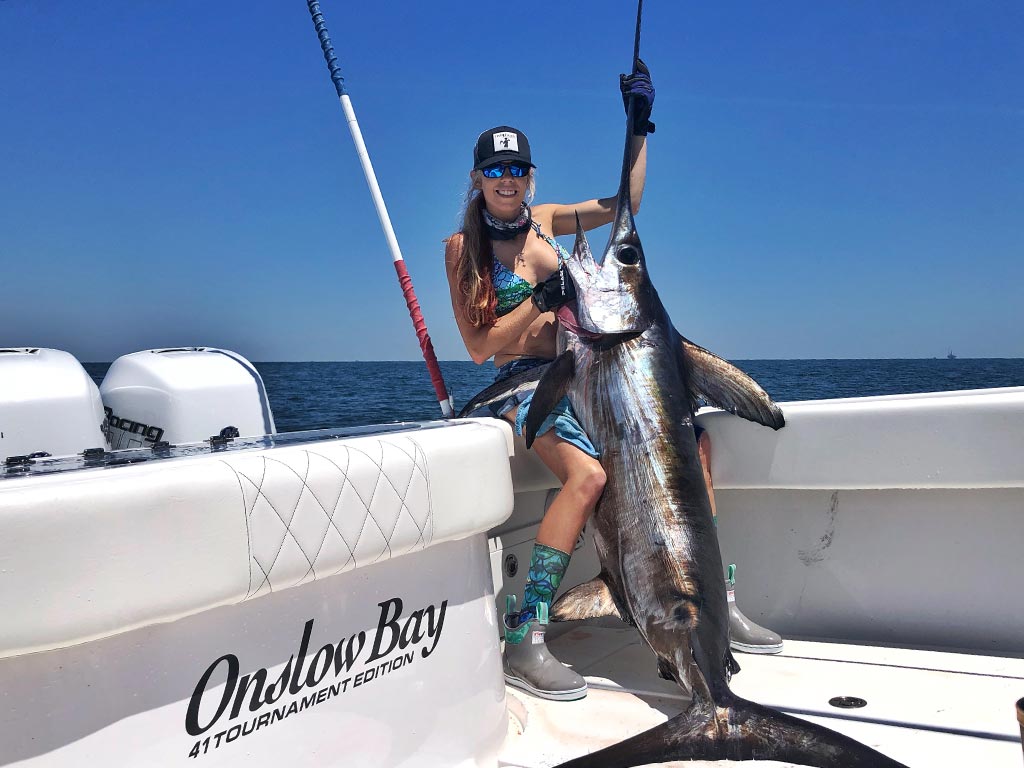
Like Tuna, Billfish also come in different varieties when fishing in the Gulf of Mexico. To start us off we have the ever-popular Marlin. Not as tasty as Tuna, anglers go after these big boys because of their superb game fishing potential and hard-fighting nature. Blue and White Marlin are the main two local representatives for waters near New Orleans, and they can grow to anywhere from 60 to over 400 pounds.
If you feel Marlin are a bit too mainstream, why not give Swordfish a shot, then? Often unfairly overlooked, many consider these Billfish to be the ultimate test of an angler’s fishing prowess. We’re not kidding about needing to know your stuff, either. Not only will you need the brains for just the right bait presentation and the brawn for reeling it in. You’ll also need to be careful not to get hurt when a Swordfish starts aggressively waving its bill around and struggling for dear life.
Mahi Mahi
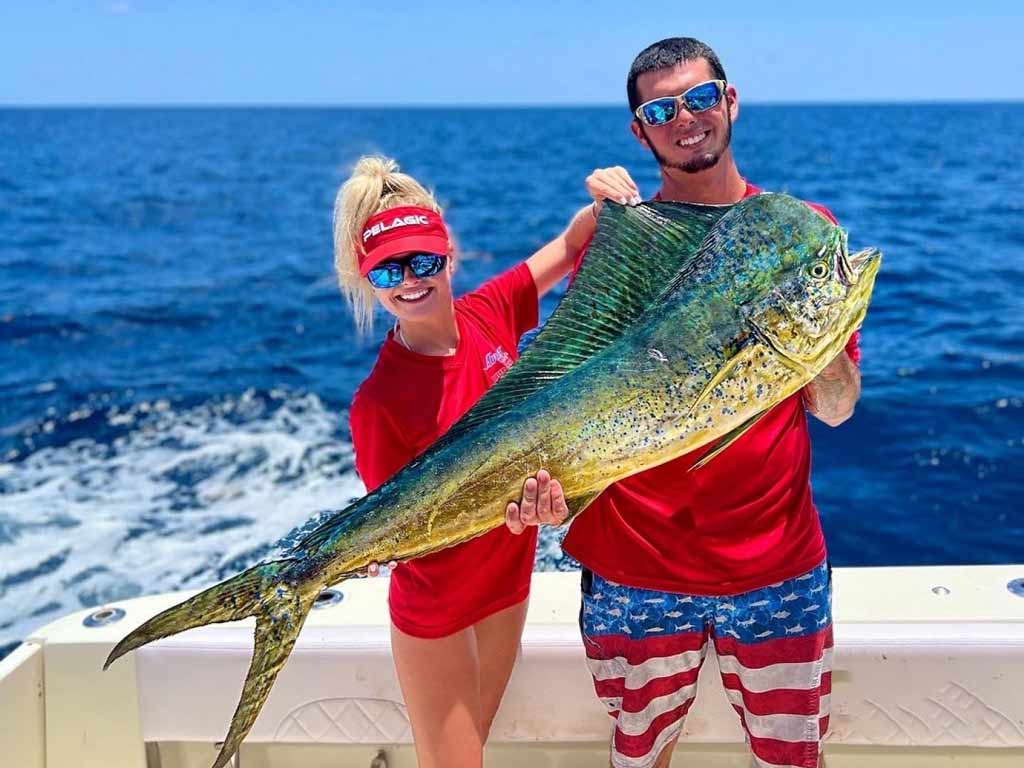
Fortunately, it doesn’t have to be all about hardcore fishing even if you’re headed into the deep blue waters. Case in point: Mahi Mahi! These vibrant pelagics tick all the boxes for a good day of fishing. They’re no pushovers but you don’t need to be a pro to reel one (or more) in successfully. It’s the perfect fish species if you’re looking for a good introduction to deep sea fishing in New Orleans.
Another reason why Mahi are a good option is the fact you can find them much closer to shore compared to a lot of other pelagics. This means you can have a lot of fun even on a shorter trip, giving you more flexibility when planning out your vacation. And finally, Mahi meat is absolutely delicious, providing you a tangible reward for all your hard work.
Groupers and Snappers
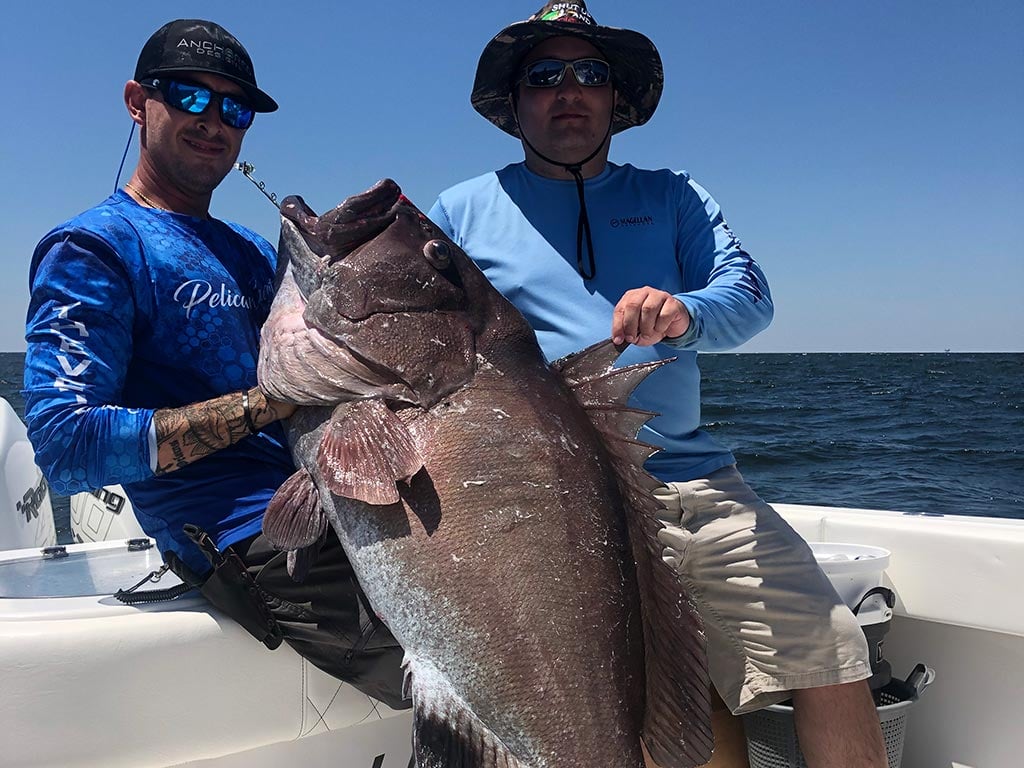
Speaking of delicious fish, we’d be remiss not to mention the local bottom feeders as well. Nestled around the thousands of oil rigs, rock piles, and pumping stations, New Orleans and its surroundings are ideal to for getting your fill of world-class bottom fishing. Stuff your cooler full of Groupers and Snappers like there’s no tomorrow – that’s just how things roll in Louisiana.
Depending on when you visit, you’ll be targeting different species. If you’re after the beloved Red Snapper, you’ll want to visit during the summer. Meanwhile, Black Grouper prowl these waters all year long – but for the ideal catch, you should target spring and early summer. As for Red and Gag Grouper, winter is probably your best bet.
Which techniques should I use for deep sea fishing in New Orleans?
Now that you know what you’re going after, we should discuss exactly how you should go about it. Deep sea fishing can be as simple as using your regular gear in deeper water, but can also be much more complex. Specialty equipment like electric reels makes it possible to reel in some huge fish without needing to be Hercules, but it’s not mandatory.
Trolling
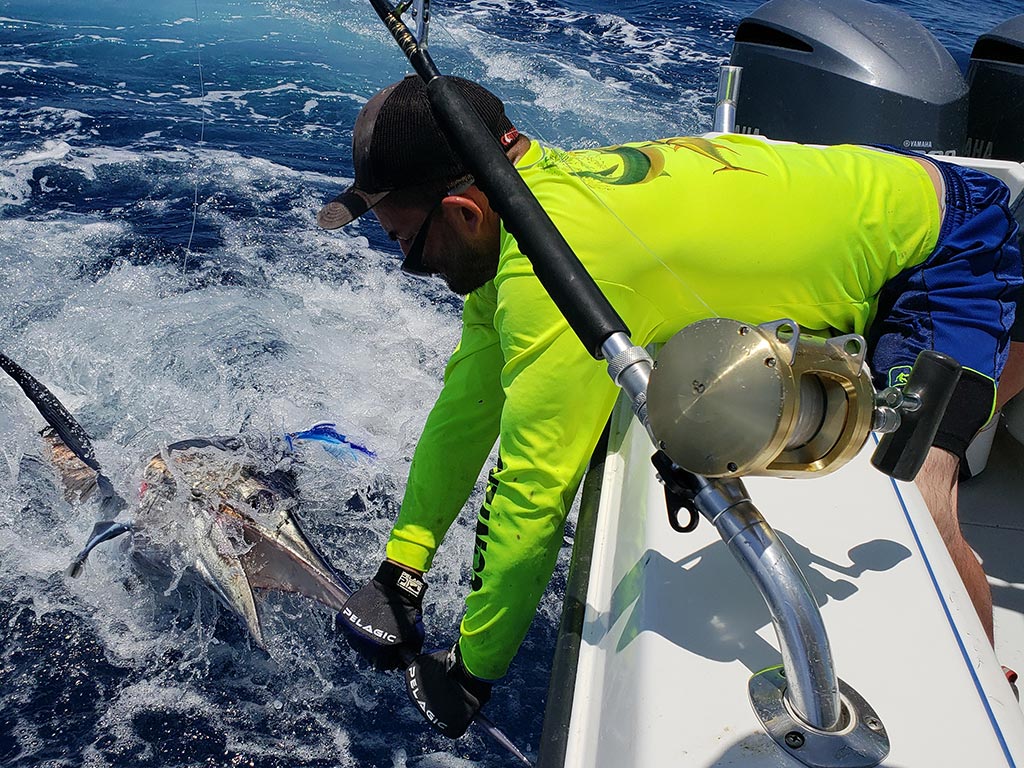
As long as you set everything up correctly, trolling can be one of the most productive ways to reel in a bunch of fish throughout the day. What you’re doing is setting up a spread of rods along the stern and sides of your boat so you can cover a lot of ground at the same time. When you start driving the boat, your bait will move in a way that should mimic swimming fish, hopefully luring in some hungry predators.
Trolling is what you want to be doing when going after pelagics. It’s your weapon of choice against the likes of Marlin, Swordfish, Mahi Mahi, and many others. And since you only need to pick up the rod when something bites, it’s a technique that allows you to focus on the action while the boat’s crew takes care of everything else.
Bottom Fishing and Deep Dropping
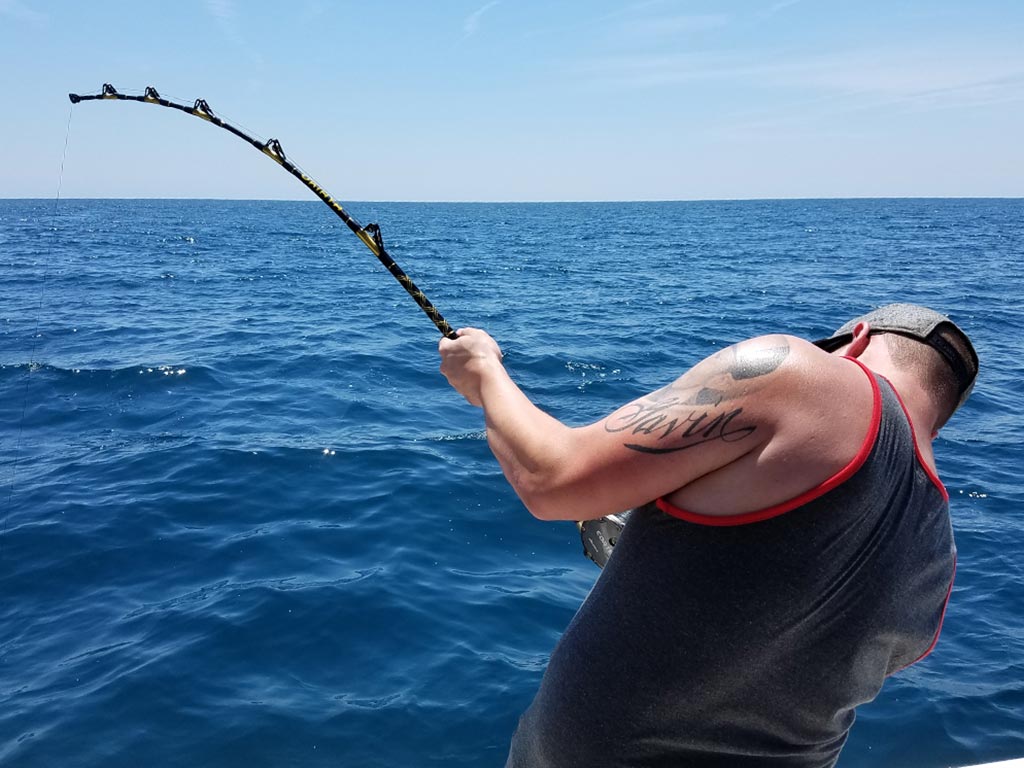
As the name suggests, bottom fishing will be your go-to technique when going after the plentiful Groupers and Snappers that inhabit this part of the Gulf Coast. At the most basic level, this is just dropping a weighted tackle into the water vertically and waiting for something to bite. Of course, it’s not that simple when you also need to think about getting the right gear and bait for the job. Fortunately, that’s why you hire a charter boat in the first place.
And deep dropping? It’s a type of bottom fishing you’ll do when fishing in very deep waters. The rules of the game change when you’re in 600+ feet deep, so you’ll need to have the right gear to match. You’ll know it’s time to use those deep drop electric reels as soon as it starts to take 20 minutes or more just to reel up your line to change the bait.
Frequently Asked Questions
summary { font-size: 18px; font-family: BlinkMacSystemFont, “Segoe UI”, Roboto, Oxygen-Sans, Ubuntu, Cantarell, “Helvetica Neue”, sans-serif;}
Do I need a license to go deep sea fishing in New Orleans?
- Yes. All anglers over the age of 16 will need to buy a fishing permit before heading out on the water. For offshore fishing, you’ll need to obtain a Louisiana saltwater angler’s license, as well as a basic Louisiana fishing license.
When should I go deep sea fishing in New Orleans?
- That depends on what you’re hoping to catch. For Marlin, June to October will be your time to shine. Swordfish season is earlier in the year, from April to June, while Red Snapper are strictly a summertime option.
Deep Sea Fishing in New Orleans: Big Fish in The Crescent City

Thanks to its vicinity to some of the deepest parts of the coastal Gulf of Mexico, deep sea fishing in New Orleans definitely warrants a place on your bucket list. With an abundance of big bluewater predators, it’ll take more than just one trip to sample everything these waters have to offer. But it won’t take more than that to get you hooked for life.
Have you ever been deep sea fishing in New Orleans? How’d it go? Any catches you want to brag about? We’d love to hear from you in the comments below.
The post Deep Sea Fishing in New Orleans: The Complete Guide appeared first on FishingBooker Blog.
from FishingBooker Blog https://ift.tt/glab7L8
via IFTTT

Leave a comment